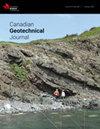从数据到决策:将贝叶斯更新与数据驱动相结合,预测软土路堤沉降
IF 3.5
3区 工程技术
Q2 ENGINEERING, GEOLOGICAL
引用次数: 0
摘要
贝叶斯更新的应用通常将土壤参数作为随机变量处理。一个重要的问题是,土壤参数是高度主观的。因此,使用传统的基于参数的模型,贝叶斯分析从主观先验开始,并且不清楚这可能如何影响研究的整体结果。在本文中,贝叶斯更新与数据驱动的方法相结合,称为CRACA(即蠕变和固结分析),用于预测软土上路堤的沉降。重要的是,该方法直接摄取测量数据,因此避免了参数选择的主观性。由于没有使用参数,因此引入了考虑与实验室测量和自动解释过程相关的不确定度的比例因子。这些因素具有统一的初始值(返回先验值),并随着时间的推移在贝叶斯框架中更新沉降监测数据,以改进未来的预测。将该模型应用于一个路堤案例历史,结果表明,当沉降监测数据显示给模型时,该模型的准确性得到了迅速提高,95%置信区间也缩小了。本文章由计算机程序翻译,如有差异,请以英文原文为准。
From data to decision: combining Bayesian updating with a data-driven prior to forecast the settlement of embankments on soft soils
Applications of Bayesian updating commonly treat soil parameters as random variables. A significant issue with this is that soil parameters are highly subjective. Therefore, using traditional parameter-based models, Bayesian analysis starts from a subjective prior and it is unclear how this may influence the overall results of a study. In this paper, Bayesian updating is combined with a data-driven method, known as CRACA (i.e. CReep And Consolidation Analysis), for predicting the settlement of embankments on soft soil. Importantly, the method directly ingests measured oedometer data and therefore avoids the subjectivity involved in parameter selection. Because parameters are not used, scaling factors are introduced that account uncertainty associated with the laboratory measurements and the automated interpretation process. These factors have an initial value of unity (returning the prior) and are updated in a Bayesian framework as settlement monitoring data is revealed over time to improve future forecasts. The model was applied to an embankment case history and was shown to result in a rapid improvement in the accuracy and a narrowing of the 95% confidence interval as settlement monitoring data is revealed to the model.
求助全文
通过发布文献求助,成功后即可免费获取论文全文。
去求助
来源期刊

Canadian Geotechnical Journal
地学-地球科学综合
CiteScore
7.20
自引率
5.60%
发文量
163
审稿时长
7.5 months
期刊介绍:
The Canadian Geotechnical Journal features articles, notes, reviews, and discussions related to new developments in geotechnical and geoenvironmental engineering, and applied sciences. The topics of papers written by researchers and engineers/scientists active in industry include soil and rock mechanics, material properties and fundamental behaviour, site characterization, foundations, excavations, tunnels, dams and embankments, slopes, landslides, geological and rock engineering, ground improvement, hydrogeology and contaminant hydrogeology, geochemistry, waste management, geosynthetics, offshore engineering, ice, frozen ground and northern engineering, risk and reliability applications, and physical and numerical modelling.
Contributions that have practical relevance are preferred, including case records. Purely theoretical contributions are not generally published unless they are on a topic of special interest (like unsaturated soil mechanics or cold regions geotechnics) or they have direct practical value.
 求助内容:
求助内容: 应助结果提醒方式:
应助结果提醒方式:


